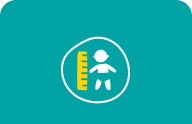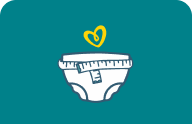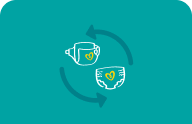Your Essential Breastfeeding Tips and Positions
Breastfeeding can have many positive effects for both you and your baby. However, it doesn’t come as easy for every parent. These tips and positions can help you ease into breastfeeding and all the challenges that may go along with it.
The Benefits of Breastfeeding
Breastfeeding offers many benefits for babies and the breastfeeding parent, including the following:
Breast milk is packed with nutrients and antibodies that help boost your baby’s immune system and aid their growth and development.
It’s easier for babies to digest than formula.
For breastfeeding parents, it releases a hormone that can help the uterus return to its original size after birth. It may also have long-term health benefits for breastfeeding parents, such as lowering the risk of illnesses like breast cancer, ovarian cancer, and cardiovascular disease.
Breastfeeding can help you form a physical and emotional bond with your little one.
Breastfeeding can be less expensive than formula feeding, and it is usually available whenever you need to feed your baby, offering convenience for many breastfeeding parents.
Of course, breastfeeding isn’t for everyone, and many parents enjoy the benefits of formula feeding. The choice is yours and whatever works best for you and your baby.
If you’re interested in breastfeeding, it’s worth trying some of these breastfeeding tips and positions, and speaking to a lactation consultant or your healthcare provider for personalized advice if you need help.
Each individual and each baby's experience is different, with some new parents finding that breastfeeding takes a little more effort than others. Whether breastfeeding comes fairly easily or presents a few challenges for you, know that you’re doing great and that things will fall into place over time.
Breastfeeding Positions
Here are some common breastfeeding positions you can try with your baby. Testing them out will help you find which ones allow your baby to latch on and ensure both of you feel comfortable and relaxed.
Cradle Hold. This is the most traditional hold that many parents try first. Cradle your baby with the arm that’s on the side your baby is nursing from. Their head should be resting in the bend of your elbow, facing your breast, and their body turned inward to you. Be sure to always support your baby’s head as it will be a while before they can hold their head up on their own.
Cross-cradle hold. This is similar to the cradle hold, except here you’re holding your baby with the arm opposite to the breast they’re nursing on. Support your baby’s head with your hand and have their bottom in the bend of your elbow. Your other arm can support your breast from underneath. You’ll want your baby’s body turned inward to you. This position is very good for newborns who are having trouble latching.
Football hold. Just like it sounds, this position involves tucking your baby under your arm as if you were holding a football. Hold your baby to your side at the level of your waist while supporting their back with your arm. Their head should be tilted up toward your breast. This position can work well if you’ve had a cesarean section, if you have large breasts, or if you’ve had twins and want to feed your babies simultaneously.
Side-lying position. While lying on your side, place your baby next to you, and lift your breast up to within your baby’s reach so they can easily access your nipple. This position is convenient for those late-night feedings (just be sure to put your baby back in their crib to sleep afterward). It’s also a good position to try if you’ve had a cesarean section.
Laid-back position. This involves reclining slightly with baby tummy-to-tummy on your chest with their head close to your breasts. Support your baby’s head and body as they move to find your nipple. This position is often good for newborns and optimal skin-to-skin contact.
Football/double-clutch hold (for twins). Like the “football hold” mentioned above, but with two babies. Each baby is tucked under one arm, their bodies positioned along your sides.
Parallel or “spoons” hold (for twins). Your babies lie parallel to each other, both facing the same direction; one in cradle hold and the other parallel to them.
Criss-cross/double-cradle hold (for twins). Your babies are held across your body, each in a cradle position, with their bodies turned towards you and their legs criss-crossed in front of you.
Front V hold (for twins). Your babies face each other in a V shape, sitting or kneeling on your lap, with one baby at each breast. This works well with pillows for support or for babies that are able to sit up.
These positions can be adjusted based on comfort, baby’s latch, and your needs. Experiment to find what works best for you.
To help visualize these positions, check out the infographic below:
Other Breastfeeding Tips
So, aside from trying out various positions, what else helps with breastfeeding? Here are some tips and tricks for breastfeeding to help your journey go as smoothly as possible.
1. Attend Breastfeeding Classes
It’s a good idea to get some information and instruction on how to breastfeed while you’re still pregnant, especially if you’re a first-time parent (or if it’s been a while since you’ve breastfed). Research shows that those who learn about breastfeeding during pregnancy are more likely to be successful than those who do not.
Breastfeeding classes may be available at a community center or hospital near you. Your healthcare provider will be able to point you in the direction of classes or a one-on-one session with a lactation consultant.
2. Gather the Essential Nursing Supplies
Anything that can help make your life simpler and more comfortable while you breastfeed your baby is a welcome addition. Here are some things to consider buying:
A well-fitting nursing bra can give your breasts the right level of support and make it possible to feed your baby without completely undressing. You may wish to stock up on nursing bras before your baby is born. Think about buying a size bigger, because your breasts may be larger after you give birth.
Breast pads can come in handy as your breasts might leak a little milk from time to time. Avoid plastic liners that can irritate your nipples. If you don’t want to buy pads, you can fold up a piece of absorbent cloth or use a handkerchief.
You'll need a breast pump, bottles, and breast milk storage bags so you can pump milk and store it for later.
You may like the extra comfort of a nursing pillow.
A rocking chair or glider can help make breastfeeding more comfortable for you, and the rocking or gliding motion might help soothe your little one.
A footstool can help raise your legs and lap higher and get your baby even closer to your breasts.
3. Discuss with Your Healthcare Provider
It’s a good idea to tell your healthcare provider during pregnancy that you’d like to breastfeed your baby. That way, your provider can make sure you have the information and resources you need. If you’re putting together a birth plan, you can include your wishes about breastfeeding in that document and also remind your healthcare team about your plans when you're admitted to the hospital to give birth.
If you're taking any medications, your healthcare provider should definitely know that you're planning to breastfeed. In some cases, your provider may recommend an alternative medication for the period while you breastfeed your little one.
4. Breastfeed Right After Birth
It’s beneficial to breastfeed your little one very soon after they’re born if possible. Newborns are typically ready to nurse within the first hour after birth.
Those first feeds nourish your baby, of course, and get you both started in figuring out this new skill and routine of breastfeeding. Other benefits include the following:
The milk that comes through in the first few days is actually colostrum—a thick, yellow fluid that’s packed with protein and antibodies that support your baby’s growth and development.
Breastfeeding encourages the release of the hormone oxytocin, which may help you bond with your baby, and help you feel more confident about your nurturing abilities.
Skin-to-skin contact during breastfeeding helps stabilize your baby’s body temperature, heart rate, breathing, and blood sugar levels.
5. Consider Different Ways to Latch
To breastfeed, your baby needs to “latch on.” This is when your baby is properly attached to your breast with their mouth wide open over your nipple, covering most of your areola, and their nose, lips, and chin close to your breast.
Here are two ways to get your baby to latch on when breastfeeding:
After getting into a comfortable breastfeeding position, cup your breast with your hand and guide the nipple to stroke your baby’s lip. This action stimulates your baby’s natural rooting reflex to open their mouth wide and suckle. Make sure to bring your baby close to your breast and aim your nipple toward the roof of their mouth.
“Baby-led” latching or “laid-back” breastfeeding involves you lying on your back and placing your baby on your chest with your baby’s cheek close to your breast. Your baby will naturally explore their surroundings, find your nipple, and latch on.
6. Breastfeed From Both Breasts Equally{#both-breasts}
If your baby has a preference for one breast, it’s a good idea to offer them the other breast at the next feeding to make sure that both your breasts get emptied equally.
Here’s a handy tip: If you tend to forget which breast your baby last nursed from, attach a safety pin to the bra strap of the other side after a feeding to remind you which side is next.
If your baby still wants to nurse from only one breast, you could pump from the other breast to relieve pressure and ensure that your breast milk supply doesn’t dwindle.
7. Ease the Pain of Engorgement
Engorgement is when the blood vessels in your breasts are swollen and your milk ducts are overfilled with milk, causing discomfort and even pain. It can happen if your baby doesn’t nurse often or efficiently.
The best prevention strategy is to feed your baby whenever they’re hungry, and to make sure they nurse from both of your breasts. The idea is to drain your breasts regularly in order to keep them from becoming painfully hard and swollen. You don’t want to have your breasts become so engorged that your baby can’t latch on properly.
Here are a few more tips for dealing with engorgement:
Express your breast milk manually or pump some milk to help relieve the pressure before nursing your baby
Massage your breasts to help the milk flow
Soak a hand towel in warm water and place it over your chest before you breastfeed You could also take a warm shower. Warmth can help the milk flow.
If you find that heat doesn’t work, try using a cool compress in between or after each breastfeeding session
Mix up your breastfeeding positions to help drain different areas of your breasts.
If these tips don’t work, contact your lactation consultant or your healthcare provider for advice. You don’t have to suffer with breast discomfort or pain—there is help available.
8. Don’t Give Up Breastfeeding If You Have Mastitis
Occasionally a clogged milk duct can get infected. This is a condition called mastitis, and the symptoms include fever- and cold-like symptoms; swollen, painful breasts; breasts that feel hot when touched; a hard lump on your breast; and red streaks on the skin of the breasts.
If you think you may have mastitis, call your healthcare provider. Your provider may prescribe an antibiotic that is safe for you to take while breastfeeding your baby. Remember to finish the entire course of antibiotics, even if your symptoms have improved.
In the meantime, there are a few home remedies you can try:
Apply a warm compress of wet or dry heat to the lump, or take a warm shower
Offer your baby the breast with the blocked duct and let them nurse for a long period, as this can help drain the blocked duct. Don’t worry—it’s safe for your baby to nurse, as the infection can’t be passed onto them. In fact, continuing to breastfeed may actually help the infection clear sooner.
Massage the lump at the same time as you nurse your baby
Wear loose-fitting tops or don’t wear a bra for a few days
Pump any remaining milk after nursing your little one to help drain the blocked duct
Take every opportunity to rest and drink lots of water.
9. Care for Your Nipples
Tender nipples are not unusual during the first few weeks of breastfeeding. Eventually, this tenderness will likely go away. To help reduce or prevent nipple discomfort, follow these breastfeeding tips:
Make sure your baby is latched properly by checking that your baby’s mouth is open wide, covering your areola and not just the tip of your nipple
Change up your baby’s breastfeeding position from time to time.
After your baby breastfeeds, try these aftercare tips for your nipples:
For a soothing effect, let some breast milk dry on your nipple
If you live in a humid climate, expose your breasts to sunlight as the hot air can help alleviate sore and cracked nipples
Use bra pads in between feedings, especially if your breasts tend to leak. Just don’t use ones lined with plastic as those can trap moisture, which can cause friction and irritation.
When bathing, wash your breasts with water and avoid the use of soaps, shampoos, or other cleansers that irritate your skin
Ask your healthcare provider to recommend an ointment or cream that can help treat or prevent sore, cracked, or bleeding nipples.
10. Follow Your Baby’s Cues When It Comes to Breastfeeding
Every baby is different, and yours may want to feed more or less often than other babies, so don’t worry if your baby doesn’t follow the schedule you had expected beforehand.
There is no feeding schedule that you must follow to the letter. Instead, pay attention to your baby’s hunger signals. Keep in mind that how often your baby wants to feed will also change over time, and may go up and down periodically as a result of things like growth spurts.
Signs your baby is hungry may include when they
are awake and alert
put their hands to their lips
suck on their fingers
flex their arms with their hands in a fist
whimper and move their arms and hands
nuzzle your breast.
Crying can be a late sign of hunger, so try not to wait until your baby starts to cry for a feeding.
In your baby’s first weeks, your newborn will likely want to feed as often as every 2 to 3 hours (8 to 12 times per day). They may spend 10 to 15 minutes nursing on each breast, or they may even breastfeed for longer stretches.
Extended nursing sessions, as well as feeding more often for a period of time, may be a sign of cluster feedings, which typically happen in the evenings during growth spurts, for example.
11. Check That Your Baby Is Getting Enough Breast Milk
You’re probably wondering if there’s an easy way to check that your baby is getting enough nourishment. Here are five tips for checking that your newborn is getting a sufficient amount of breast milk:
Listen for your baby swallowing while nursing, typically after several sucks.
Keep an eye on your baby to see if they appear satisfied for a few hours after the feeding session. For example, your baby’s arms will most likely be relaxed with open palms, signaling that they’re full and content.
Before a feeding, your breasts may feel full and firm, but after a feeding they will feel softer. This is a sign your little one has been fed. As time goes by you’ll notice this difference less. You may think your breasts are completely empty of milk, but know that your breasts are always in the process of producing milk.
A very accurate sign that your baby is getting enough to eat is steady growth. Your healthcare provider will check your baby's weight, length, and head circumference at each checkup. Know that it’s normal for a newborn to lose up to 10 percent of his birth weight in the first few days, but by the end of their second week, they should be back to gaining weight at a steady pace.
Keeping track of your little one’s wet and dirty diapers helps you know they’re eating well. In your baby’s first month, they may produce about six or more wet diapers a day with light-colored urine, and have three to four bowel movements a day that are soft and yellowish in color. Later on, the frequency of bowel movements may decrease.
If you’re ever concerned that your baby isn’t eating enough, call your healthcare provider—don’t wait for the next scheduled checkup.
12. Increase Your Milk Supply, If Needed
To help increase your milk supply, here are four things you can do:
Breastfeed more often, as this will result in your breasts producing more milk
Pump after nursing, as this can help stimulate your breasts to produce more milk
Drink plenty of water and eat a nutritious breastfeeding diet. You don’t especially need to eat certain foods to help with breast milk supply, but a nutritious diet will benefit you and your baby.
Try to reduce stress and relax. For example, take some time for yourself every day, even if it’s just 15 minutes.
Here are some reasons why you may have a low milk supply:
You might not be breastfeeding often enough (remember that newborns feed about 8 to 12 times a day). Breastfeeding or pumping too infrequently may signal your breasts to produce less milk.
If your baby was born prematurely, your preemie may not be strong enough to nurse enough milk from your breasts. This can lead to a decrease in milk production.
Contact your lactation consultant or healthcare provider for more personalized advice on increasing your breast milk supply.
13. Consider Using a Breast Pump
You may need or want to pump if
circumstances make it difficult for you to feed your newborn; for example, if your baby is born prematurely and is in the NICU
your breasts are engorged after or between feeds
you have mastitis; pumping can help relieve the discomfort associated with this condition
your baby wants to nurse from only one breast and not the other
you would like to have some extra breast milk stored so that someone else, such as your partner or a babysitter, can bottle-feed your baby
you’re heading back to work and plan to pump during the day.
There are many different breast pumps available; another option is to choose hand expression. If you’re having trouble deciding, speak with your lactation consultant or healthcare provider for advice. Your lactation consultant can also help you learn how to master hand expression or how to use your new breast pump.
At first, your baby may be a little leery of feeding from a bottle, especially since it will be new to them, but eventually, they’ll get used to it. In some cases, your baby may refuse to take a bottle from you, but they’ll happily take it from your partner or a babysitter. So it’s worth trying different approaches.
14. Wait Before Introducing a Pacifier
Giving your baby a pacifier can help soothe them between feeds; however, offering it in those first few weeks can have a negative effect on your milk supply, and discourage your baby from wanting to nurse.
Experts recommend waiting until your baby has gotten used to breastfeeding before offering a pacifier.
Of course, you may use a pacifier sparingly to comfort your baby earlier than that, like when they’re getting a vaccination, but you could also offer them your clean pinky finger to suckle on for comfort during these short periods.
15. Get Prepared for Breastfeeding in Public (If You Choose To!)
At some point, you may like to breastfeed your baby while you’re in a public place. Here are some tips for breastfeeding in public:
Wear clothing that allows you to easily access your breasts, like a loose top or a button-down shirt
You may wish to use a nursing cover, oversized scarf, or light blanket to cover yourself when you’re breastfeeding. Practice this at home so that you and your baby can get used to it.
Breastfeed while wearing your baby in a sling or soft baby carrier. Not only is this practical, but it also keeps your baby comfortably close to you.
Find a lounge or a dressing room in a department store so that you have somewhere peaceful to breastfeed.
16. Pay Attention to Your Nutrition and Well-Being
Maintaining a healthy lifestyle is just as important now that you’re breastfeeding as it was when you were pregnant, and at other times in your life.
Here are some tips to help you stay on track:
Eat a healthy, well-balanced diet while breastfeeding. Include lots of fruits, vegetables, whole grains, and protein-packed foods like lean meats, beans, and dairy products. To make breast milk, your body may need about 450 to 500 extra calories a day (2,500 calories total) if you're at a normal weight.
Take a multivitamin or other supplement if it’s recommended by your healthcare provider
Drink plenty of water. Aim for at least eight glasses a day to stay hydrated since breastfeeding uses a lot of fluid. Stay away from sugary drinks, even juices.
Rest up as much as you can and try to sleep when your baby sleeps to take advantage of those opportunities for rest.
17. Avoid Alcohol and Smoking, and Limit Certain Foods
The following tips are reminders that as long as you’re breastfeeding, you’re passing on what you eat and drink to your baby. So here are some food, drinks, and other substances to avoid while breastfeeding to ensure your baby isn’t affected in a negative way:
Limit your caffeine intake to 200 mg a day. Caffeine can irritate your baby and affect their sleep.
Limit consuming seafood that’s high in mercury like swordfish, king mackerel, and tilefish
Avoid smoking, since nicotine can interfere with your baby’s sleep and health. Secondhand smoke also increases the risk of Sudden Infant Death Syndrome (SIDS) and respiratory illnesses in your baby.
Avoid drinking alcohol, as it’s not safe for your baby. If you do happen to have the occasional drink, wait two to three hours for it to leave your system before breastfeeding. “Pumping and dumping” your milk won’t speed up the removal of alcohol from your breast milk.
18. Get Help If You’re Struggling With Breastfeeding
If breastfeeding is difficult or uncomfortable, don't hesitate to reach out for help, and don't be embarrassed. Breastfeeding is a natural process but it does take time and practice, and problems can crop up along the way. There are many people and resources you can turn to for guidance and support: your own healthcare provider, the nurses and staff in the hospital, a lactation consultant, and also organizations that specialize in breastfeeding.
The Bottom Line on Breastfeeding
Breastfeeding can be challenging at times, especially if you’re a new parent, and it’s normal to feel a little anxious about it.
By following these tips, trying different positions, and getting some professional help, you’ll soon get the hang of it. Plus, the more you nurse, the more milk you’ll produce, and the more practice you’ll get. Before long, breastfeeding will become a routine and enjoyable part of your day, and you’ll look forward to the special bonding time it gives you and your baby.
Whether you choose to breastfeed or formula feed, one thing’s for sure—you’ll need plenty of diapers! So, before you go, download the Pampers Rewards App for rewards and discounts on all those diaper purchases.
How We Wrote This Article The information in this article is based on the expert advice found in trusted medical and government sources, such as the American Academy of Pediatrics and the American College of Obstetricians and Gynecologists. You can find a full list of sources used for this article below. The content on this page should not replace professional medical advice. Always consult medical professionals for full diagnosis and treatment.
Join a World of Support
through Pregnancy and Parenthood.
TRACK WITH TOOLS
LEARN WITH EXPERTS
GET REWARDED













